In the 17th century, the town of Eyam quarantined itself during the plague. There are signs outside many of the houses giving details of the people who lived and died there.



8th century celtic cross.
Week 34: Peanut Butter Cups |
Story location: Home / food_and_drink / recipe_a_week / |
| 24/Aug/2010 |
We melted a mixture of milk and plain chocolate together and poured some into paper cake cups. The peanut butter was made by putting some salted peanuts into a food processor. The peanut butter was slightly crumbly. We tried to avoid adding any extra fat so didn't add any vegetable oil to the peanuts but next time we make it, we might add a small amount to help make it more like a paste.
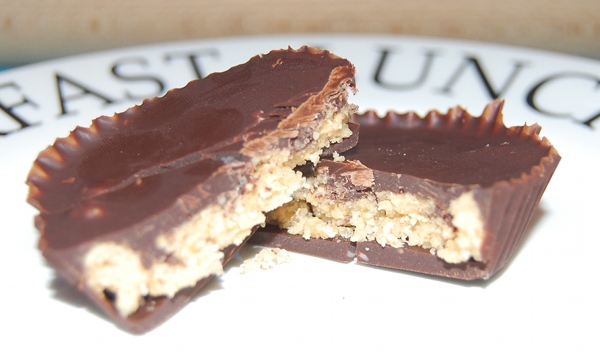
Naan bread pizza |
Story location: Home / Blog / food_and_drink / |
| 21/Aug/2010 |
The pizza base was made using a naan bread recipe:
- Make a yeast starter using 1 tsp of yeast, 1 tsp of sugar and a couple of tablespoons of warm water. Leave for a few minutes for the yeast to start working.
- Add 200g of flour, 1 tsp of black onion seeds, 1tsp of chilli flakes 1/2 tsp of baking powder and a pinch of salt.
- Add a couple of tablespoons each of milk and yoghurt and mix together to make a dough. Knead for a few minutes.
The pizza sauce was a mixture of tomato purée and curry paste.
The first pizza was a chicken curry, topped with onion, pepper, chillies and a slightly sweet cheese with bits of ginger in it.
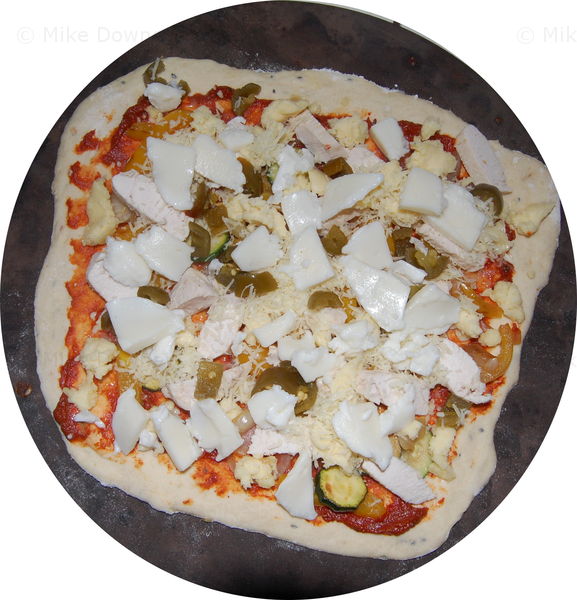
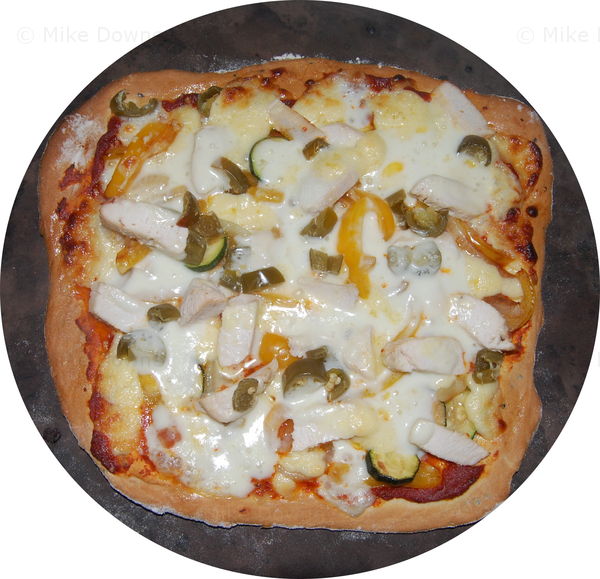
The second pizza had prawns, the same vegetables, and a garlic and herb cheese.
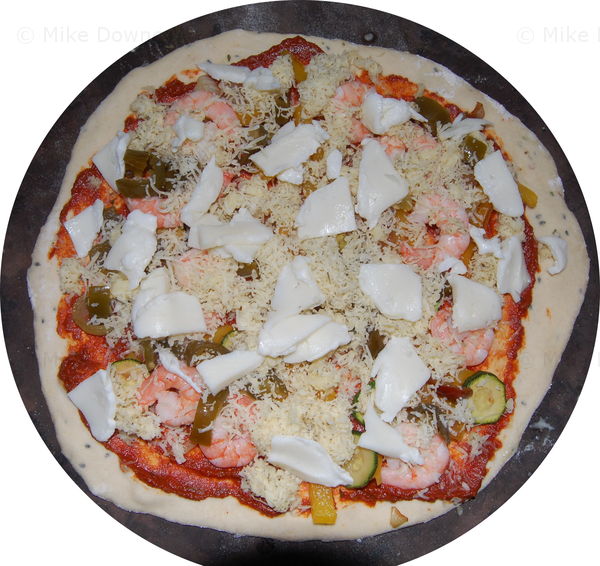
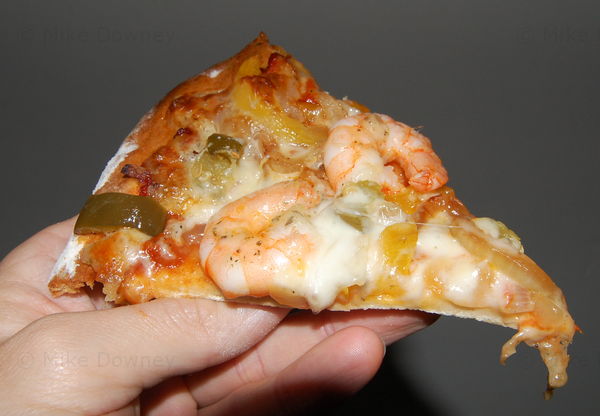
Week 33: Curry and Naan bread |
Story location: Home / food_and_drink / recipe_a_week / |
| 20/Aug/2010 |
We saw the naan breads being made on the Saturday Kitchen on TV and it looked so easy we decided to give it a go. We followed the recipe from the BBC web site but needed to add a few extra tablespoons of water to get the dough to come together properly. We also found that gas mark 1 was a bit low so turned the oven up to 2 and gave them a few more minutes.
The naan bread tasted like 'proper' bought ones. The black onion seeds are vitally important and give the bread most of its familiar flavour.
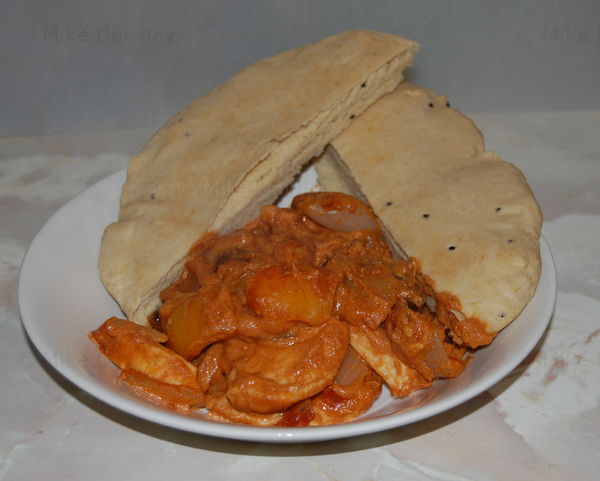
We served the naan breads with our chicken korma, and washed it down with a glass of Indian wine. The wine was an Indage 'The Grey Count' chenin blanc and went rather well with the curry. The wine was ok on its own but the spiciness of the curry seemed to bring out more flavour if you take a sip immediately after a mouthful of curry.
Sign outside The Rocket pub, near Coventry railway station.

In the second series of the BBC TV series 'Grow your own drugs', James Wong gave a recipe for a herbal moth repelling mixture. We haven't had a problem with moth-eaten clothes but we do sometimes get a lot of tiny moths in the house.
The recipe calls for sage, rosemary and wormwood. We already had sage and rosemary in the garden so I bought some wormwood seeds. It took a few months for the plants to be big enough to pick the leaves but a few weeks ago I picked some of each herb and spread them out to dry.
I put some of the dried herbs in a small bowl in the living room and after a few days it seemed to be working - there are definitely fewer moths in the room. I have since read that moths don't like cloves so I added a few cloves to the bowl first.
This morning I made up some of the moth repelling sachets, adding a couple of cloves to each. I didn't have any muslin so I cut an old tea towel into squares and used that instead. The material was a bit too thick so they were a bit fiddly to make. I put the sachets in the wardrobes and on the bedroom shelf so I will see if they make a difference.
Week 32: Tuna Wasabi Pasta Bake |
Story location: Home / food_and_drink / recipe_a_week / |
| 13/Aug/2010 |
The pasta bake makes enough for 4 servings. We ate half on wednesday and put the rest in the fridge. We finished it off tonight and like a lot of such foods, the flavours seem to improve after a few days.
Method
Pre-heat the oven to gas mark 4.
Dice and fry some vegetables: 2 medium onions, 1 small courgette, 1 pepper, a couple of cloves of garlic.
Cook 250g of pasta.
Drain one tin of tuna.
Make a cheese sauce (approximately 400-500ml or so). We made a roux using 40g of butter and 40g of flour. We added 100g of grated cheese, 1 tablespoon of wasabi paste, and a sprinkling of chilli flakes.
To assemble, mix the pasta and vegetables in a pyrex tray. Stir in a couple of tablespoons of tomato puree and the tin of tuna.
Stir in the cheese sauce and top with a mixture of grated cheese and seeds and/or breadcrumbs. We used some ground-up Wasabi Peas (from Marks & Spencers) to give a crunchy texture and extra wasabi flavour.
Cover the tray with foil and bake for 40 minutes, removing the foil 10 minutes before the end to crisp off the toppings.
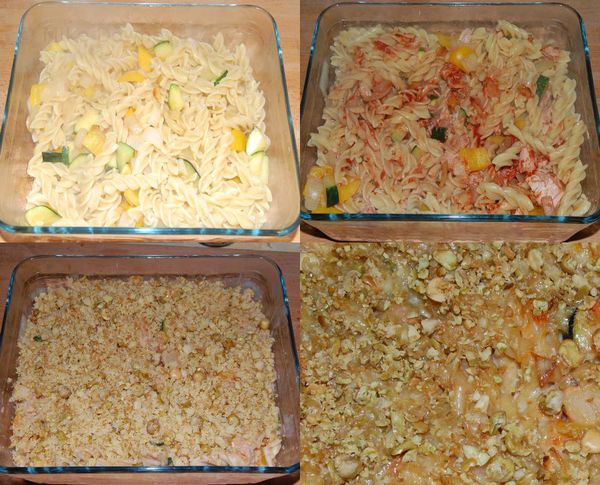
Clockwise from top left: 1) Pasta and vegetables in the pyrex dish. 2) Tuna and tomato puree mixed in. 3) Ready for the oven. 4) Close up of the crispy topping.
Elderflower Delight Update |
Story location: Home / food_and_drink / recipe_a_week / |
| 09/Aug/2010 |
I made the Elderflower Delight on thursday evening and put it in the fridge overnight to set. When I checked on friday morning, it hadn't gone properly firm but was more like a very thick syrup.
On friday evening I scraped it back into a saucepan and warmed it up again, adding another sachet of gelatine (the gelatine was a bit out of date so might have lost some of its effectiveness). This time it set properly - still slightly soft but firm enough to cut into cubes.
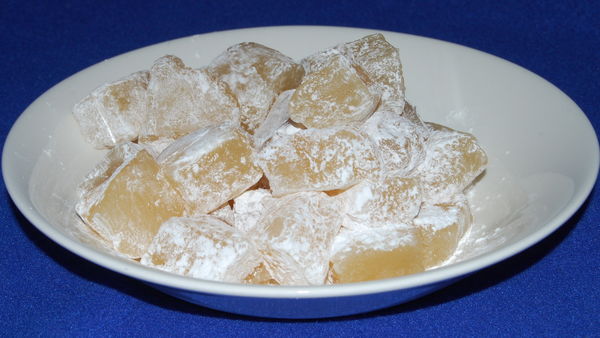
I mixed equal weights of icing sugar and cornflour together and coated the cubes in it to stop them from sticking together.
For a first attempt, the elderflower delight was quite good. It is quite sweet, so I could probably only eat a few cubes at once, but the elderflower flavour was just about right.
Week 31: Elderflower Delight |
Story location: Home / food_and_drink / recipe_a_week / |
| 06/Aug/2010 |
I spotted this recipe in the River Cottage Hedgerow book. We had all the ingredients in the kitchen (sugar, cornflour, elderflowers, lemon juice, gelatine) and it seemed straightforward enough to make.
The only changes I made were to use 300ml of elderflower extract (which I had made for the elderflower wine and cider) and to use powdered gelatine instead of leaf gelatine.
I don't think I was prepared for the amount of stirring involved but eventually it thickened so I poured it into a baking tray to cool and set.
I ordered this book last week and it arrived this morning. I had a quick flick through it initially and one of the first things I noticed was that one of the plants which grows along the path through the woods looks a lot like Horseradish.
I had a more thorough read through at lunchtime to confirm the identity of a few other plants which I have seen locally. Each plant in the book has a page or two describing its appearance, typical location, any associated folklore, and usually a recipe suggestion.
I was never brought up to recognise wild plants - I knew about sloes and blackberries but that was about it. I have since encountered elderberries, plums and rowan berries but that's about it. The book is going to be invaluable in helping me learn a bit more about the various plants growing in the countryside, and to spot which ones are worth eating. There is also a section on poisonous plants and how to recognise them when they might be confused with other edible plants.
In addition to the brief recipe suggestions associated with each entry, there is also a chapter of recipes at the back of the book which makes use of many of the wild ingredients.
I'm very new to the foraging/wild food idea but the book is an excellent introduction. It will certainly accompany me whenever I'm out in the countryside.
